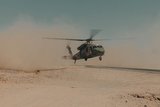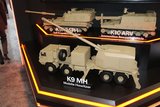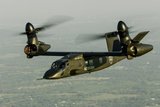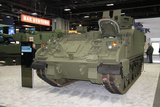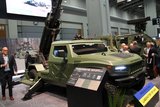AUSA 2025: IAI presents its bid for US Army’s next-generation VTOL UAS requirement
A model of the OmniRaider on display at AUSA 2025. (Photo: author)
ThunderB uncrewed aerial system (UAS) from Israel Aerospace Industries (IAI) is in service in 11 countries and has been used widely in operations in the Gaza Strip over the past two years, according to the company.
That experience and knowledge has been fed into the spiral development of the platform and the use of modular payloads of less than 10kg covering C4ISR, targeting and 3D mapping as well as other roles.
The platform uses battery power for the vertical take-off and landing (VTOL) segment of the operation with a piston engine providing the forward motion. The company states an endurance of 12-14h
Already have an account? Log in
Want to keep reading this article?
More from AUSA 2025
-
![AUSA 2025: Israel’s Asio Technologies to supply hundreds of improved Taurus tactical systems]()
AUSA 2025: Israel’s Asio Technologies to supply hundreds of improved Taurus tactical systems
Taurus operates alongside the Israel Defense Forces’ Orion system which supports mission management across tens of thousands of manoeuvring forces, from squad leaders to battalion commanders.
-
![AUSA 2025: Kopin pushes micro-LED plans as China moves faster]()
AUSA 2025: Kopin pushes micro-LED plans as China moves faster
The plan for the new displays follows fresh investment in Kopin’s European facilities by Theon and an order for head-up displays in fielded aircraft, with funding from the US Department of Defense.
-
AUSA 2025: Hanwha Aerospace reveals new wheeled artillery system
The aerospace company showed a model of its new mobile howitzer at AUSA in Washington, where a representative told Shephard more about its design.
-
![AUSA 2025: US Army and Bell squeeze MV-75 programme]()
AUSA 2025: US Army and Bell squeeze MV-75 programme
The MV-75, previously V-280, was originally designed as an assault aircraft which would replace some of the Black Hawk helicopters and add speed as a tilt-rotor platform. It is now envisioned to add a greater multirole capability reminiscent of the Black Hawk fleet.
-
AUSA 2025: BAE Systems delivers more than 500 AMPVs to the US Army
The US Army requires 2,907 Armored Multi-Purpose Vehicles to replace its M113 family, and there are multiple versions in production.
-
AUSA 2025: AM General Hawkeye awaits first production contract
AM General presented its new Hawkeye at AUSA 2025 in Washington, with prototypes of the howitzer system having been trialled in Ukraine last year.









